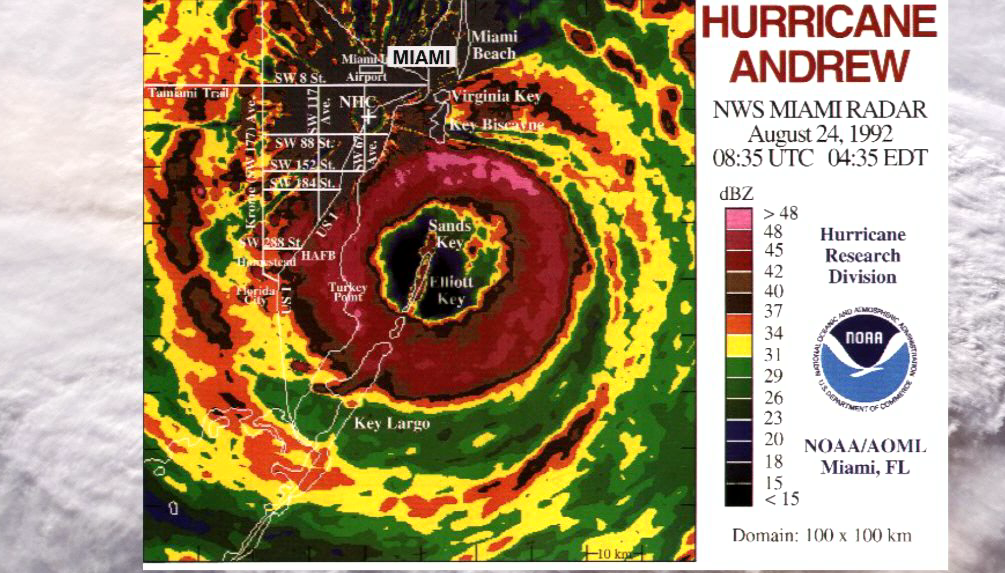It’s been over a century since a major hurricane (category 3 or greater) has made landfall in the Tampa Bay Area. That was the 1921 Tampa Bay Hurricane. And while the area has been hit by multiple damaging storms since then, Tampa Bay has somehow avoided the big one.
But the Director of the National Hurricane Center, Ken Graham, said that our luck is bound to run out at some point and we need to be prepared for that eventuality.
He made these remarks during a sit down interview recently at the National Hurricane Conference in Orlando with News Channel 8 Chief Meteorologist and Climate Specialist Jeff Berardelli.
Graham referenced the past couple of years hyperactive hurricane seasons and the multiple landfalls in Louisiana, saying that in a different weather pattern, that could have easily been the West Coast of Florida. It would not have taken too much of pattern a shift for that to happen.
It may sound hard to believe, but Florida has only seen 4 landfalling category 4 or greater storms in the past 50 years. The Saffir Simpson hurricane scale categorizes these storms as ‘catastrophic’ damage producers.
These catastrophic storms were Hurricane Andrew in 1992, Hurricane Charley in 2004, Hurricane Irma in 2017 and Hurricane Michael in 2018. The two which affected the Bay Area were Charley and Irma.

While many people who have lived in Florida for a while believe they have experienced a truly catastrophic hurricane, few have. That’s because the worst of the winds and surge in a hurricane are often confined to a very small radius around the center of the storm.

Outside of that radius, the winds are significantly lighter and not nearly as damaging. Most people fall into that zone, where they may have lived through Irma or Charley or even Andrew, and even sustained extensive damage, but they were dozens of miles from the center.
This is vividly illustrated below in category 5 Hurricane Andrew, in which the most intense winds were confined to the eyewall near Homestead, Kendall and Coral Gables, a fair distance south of Miami and very far south of Ft Lauderdale.

If you ask people who lived in South Florida in 1992 if they understand what’s it’s like to go through a catastrophic hurricane, most will say yes. But the truly catastrophic winds were confined to the southern half of the county. Meaning anyone north of Miami did not bear the brunt of the storm.
It is these experiences which concern hurricane experts and emergency managers because it can lead to a false sense of security, feeling they have already seen the worst of Mother Nature, but in reality it can be much worse.
And with so many new residents moving to the Sunshine State, who have yet to experience a direct hit from a hurricane, emergency managers are concerned residents may not fully understand threat. Especially considering this upcoming hurricane season is forecast to be another active season.
In the Tampa Bay Area, only 2 of the above catastrophic hurricanes impacted the area – Charley and Irma.

Hurricane Irma is the most recent in 2017. It made landfall in Big Pine Key as a category 4, causing devastating damage. But the storm quickly weakened as it moved north.
By the time it reached Hardee, Desoto and Polk County the storm was a category 1 hurricane. Nevertheless it managed to produce extensive damage and power outages. It was a formidable storm, but nowhere near as strong as it could have been.
In 2004 Hurricane Charley made landfall near Punta Gorda, south of the Bay Area. Charley was an extremely intense and compact category 4 hurricane. It was so tightly wound that many likened it to a giant tornado, causing buzz saw damage along its path.
Because the system was so tight, it was able to remain intense far inland, even into southern and eastern portions of the Bay Area. Officially the storm remained a major hurricane into Polk County, but was weakening as it moved northeast towards Orlando.
In the case of Charley – Desoto, Hardee and Polk counties all experienced winds gusts well over 100 mph, causing catastrophic damage. But as seen below on this FEMA map, the swath of damage was very narrow. And areas just miles away from the storm like Sarasota, St. Pete and Tampa did not even experience hurricane force gusts.

The bottom line is, most people who live in the state have never experienced the full wrath of major hurricane. Understanding that reality is a key to being adequately prepared this upcoming hurricane season.






